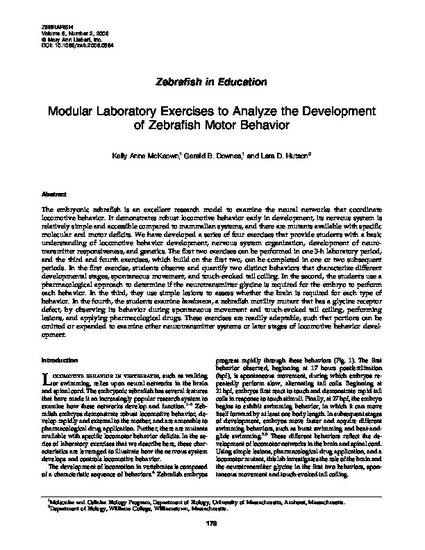
The embryonic zebrafish is an excellent research model to examine the neural networks that coordinate locomotive behavior. It demonstrates robust locomotive behavior early in development, its nervous system is relatively simple and accessible compared to mammalian systems, and there are mutants available with specific molecular and motor deficits. We have developed a series of four exercises that provide students with a basic understanding of locomotive behavior development, nervous system organization, development of neurotransmitter responsiveness, and genetics. The first two exercises can be performed in one 3-h laboratory period, and the third and fourth exercises, which build on the first two, can be completed in one or two subsequent periods. In the first exercise, students observe and quantify two distinct behaviors that characterize different developmental stages, spontaneous movement, and touch-evoked tail coiling. In the second, the students use a pharmacological approach to determine if the neurotransmitter glycine is required for the embryo to perform each behavior. In the third, they use simple lesions to assess whether the brain is required for each type of behavior. In the fourth, the students examine bandoneon, a zebrafish motility mutant that has a glycine receptor defect, by observing its behavior during spontaneous movement and touch-evoked tail coiling, performing lesions, and applying pharmacological drugs. These exercises are readily adaptable, such that portions can be omitted or expanded to examine other neurotransmitter systems or later stages of locomotive behavior development.
Available at: http://works.bepress.com/gerald_downes/4/

DOI: 10.1089/zeb.2008.0564
This is a copy of an article published in the Zebrafish © 2009 copyright Mary Ann Liebert, Inc.; Zebrafish is available online at: http://online.liebertpub.com.